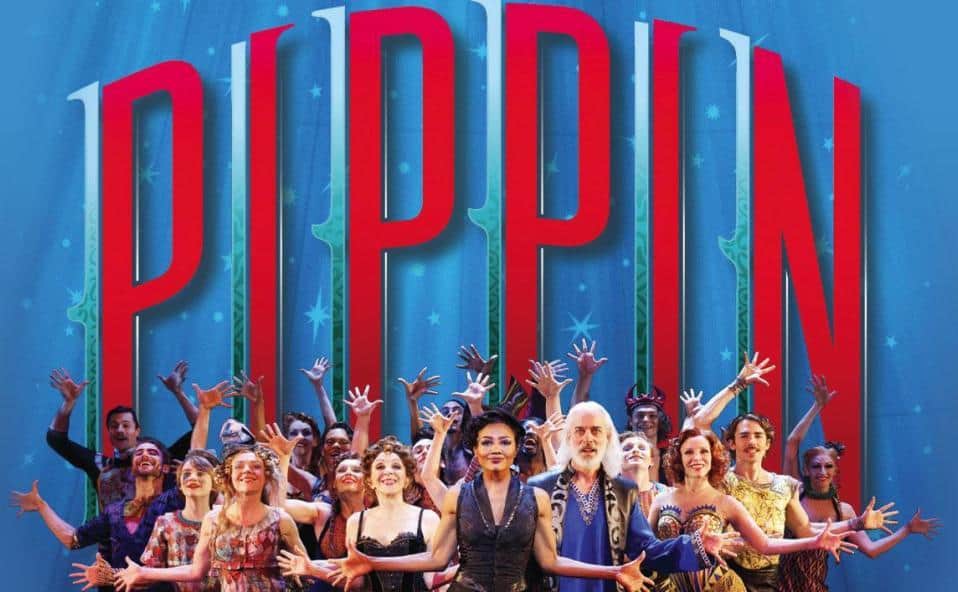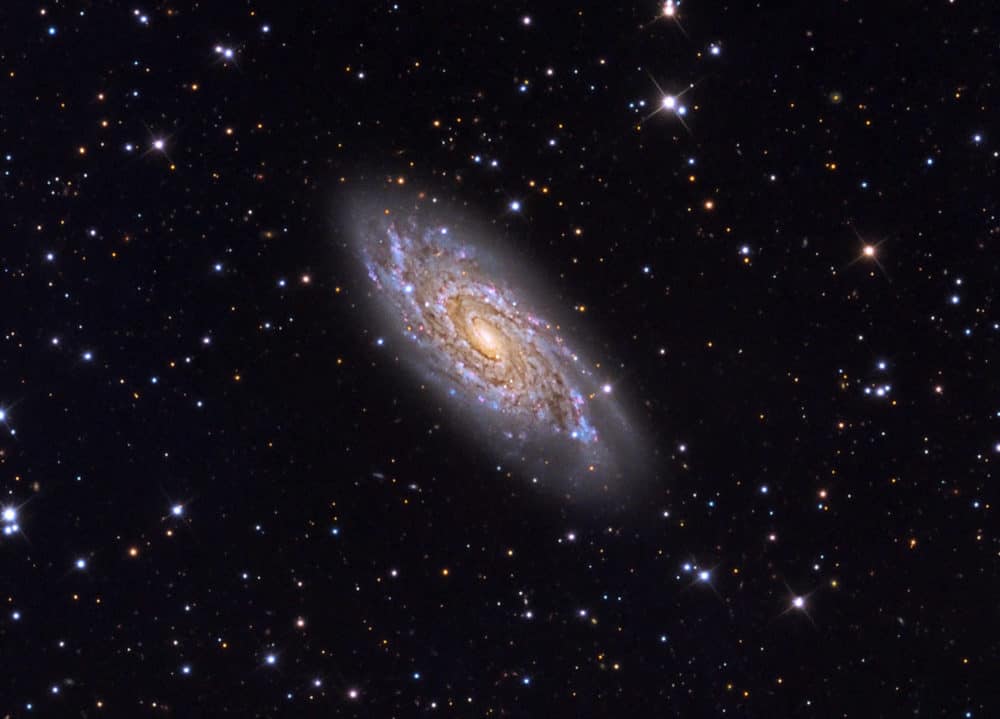Blog
Michael Rose (born 11 July 1957) is a Grammy award-winning reggae singer from Jamaica. Possessing a wide-ranged voice, Rose would regularly meet in Kingston with singers, musicians, writers, and producers such as Dennis Brown, Big Youth, The Wailers, Gregory Isaacs, Sly and Robbie, and others. Rose started his recording career as a solo artist for record producers Yabby You and Niney the Observer. He joined Black Uhuru in 1977 after the departure of Don Carlos and Garth Dennis. He led them to international success in the early 1980s, having written most of their popular material. They won the first-ever Grammy Award for reggae in 1985 for the album Anthem, with the hallmark voice of Rose in the forefront.
After the release of Anthem, Rose left Black Uhuru and retired to the Blue Mountains in Jamaica to start a coffee farm. He released a string of singlesin Jamaica, but nothing much was heard of him outside the island until 1989, when he was signed to RCA and released the strongly pop influenced album Proud in Europe and Japan. The deal with RCA was short-lived however, and Rose returned to Jamaica to record a new string of Sly and Robbie produced singles. He also recorded for other producers but the only albums during this period were the Japan only releases Bonanza (1991) and King Of General (1992). The Sly and Robbie produced singles were eventually released on the vinyl only Sly And Robbie presents: Mykall Rose – The Taxi Sessions in 1995 also saw his American debut as a solo artist with the album Michael Rose on Heartbeat Records. The single “Short Temper” reached #2 on the Gavin reggae chart.
more...Tomasz Ludwik Stańko (11 July 1942 – 29 July 2018) was a Polish trumpeter and composer. Stańko is strongly associated with free jazzand the avant-garde.
In 1962, Tomasz Stańko formed his first band, the Jazz Darings, with saxophonist Janusz Muniak, pianist Adam Makowicz, bassist Jacek Ostaszewski, drummer Wiktor Perelmuter. Inspired by early Ornette Coleman and the innovations of John Coltrane, Miles Davis and George Russell, the group is often cited by music historians as the first European group to play free jazz. In his later years he collaborated with pianist Krzysztof Komeda on Komeda’s album Astigmatic, recorded in late 1965. In 1968, Stańko formed a quintet whose members included Janusz Muniak – tenor and soprano saxes, flute, Zbigniew Seifert – alto sax and violin, Bronisław Suchanek – bass, Janusz Stefański – drums, percussion. In 1975, he formed the Tomasz Stańko-Adam Makowicz Unit.
Stańko established a reputation as a leading figure not only in Polish jazz, but on the world stage as well, working with many notable musicians, including Jack DeJohnette, Dave Holland, Reggie Workman,[4] Rufus Reid, Lester Bowie, David Murray, Manu Katché and Chico Freeman. From 1984 he was a member of Cecil Taylor‘s big band.
more...the spiral galaxy Messier 98, which is located about 45 million light-years away in the constellation of Coma Berenices (Berenice’s Hair). It was discovered in 1781 by the French astronomer Pierre Méchain, a colleague of Charles Messier, and is one of the faintest objects in Messier’s astronomical catalogue.
Messier 98 is estimated to contain about a trillion of stars, and is full of cosmic dust — visible here as a web of red-brown stretching across the frame — and hydrogen gas. This abundance of star-forming material means that Messier 98 is producing stellar newborns at a high rate; the galaxy shows the characteristic signs of stars springing to life throughout its bright centre and whirling arms.
Béla Anton Leoš Fleck (born July 10, 1958) is an American banjo player. An innovative and technically proficient banjo player, he is best known for his work with the bands New Grass Revival and Béla Fleck and the Flecktones. A native of New York City, Fleck was named after Hungarian composer Béla Bartók, Austrian composer Anton Webern, and Czech composer Leoš Janáček. He was drawn to the banjo at a young age when he heard Earl Scruggs play the theme song for the television show Beverly Hillbilliesand when he heard “Dueling Banjos” by Eric Weissberg and Steve Mandell on the radio. At age of 15, he received his first banjo from his grandfather. During the train ride home, a man volunteered to tune the banjo and suggested he learn from the book How to Play the Five String Banjo by Pete Seeger. He attended the High School of Music & Art in New York City, playing French horn until he flunked and was transferred to the choir, though he spent most of his time on the banjo. He studied the book Bluegrass Banjo by Pete Wernick and took lessons from Erik Darling, Marc Horowitz, and Tony Trischka. He is Jewish.
After graduating from high school, he moved to Boston and became a member of the group Tasty Licks, with whom he recorded two albums. He released his debut solo album, Crossing the Tracks (1979), and it was chosen Best Overall Album by the readers of Frets magazine.
Fleck played on the streets of Boston with bassist Mark Schatz. Along with guitarist Glen Lawson and mandolinist Jimmy Gaudreau, they formed Spectrum in 1981. That same year, Sam Bush asked Fleck to join New Grass Revival. Fleck performed with New Grass Revival for nine years. During this time, in 1987 Fleck recorded another solo album, Drive, which was nominated for a Grammy Award in 1988 for Best Bluegrass Album. During the 1980s Fleck and Bush also performed live with Doc Watson and Merle Watson in bluegrass festivals, most notably the annual Telluride Bluegrass Festival.
more...Lee Morgan (July 10, 1938 – February 19, 1972) was an American jazz trumpeter and composer. One of the key hard bop musicians of the 1960s, Morgan came to prominence in his late teens, recording on John Coltrane‘s Blue Train (1957) and with the band of drummer Art Blakey before launching a solo career. Morgan stayed with Blakey until 1961 and started to record as leader soon after. His song “The Sidewinder“, on the album of the same name, became a surprise crossover hit on the pop and R&B charts in 1964, while Morgan’s recordings found him touching on other styles of music as his artistry matured. Soon after The Sidewinder was released, Morgan rejoined Blakey for a short period. After leaving Blakey for the final time, Morgan continued to work prolifically as both a leader and a sideman with the likes of Hank Mobleyand Wayne Shorter, becoming a cornerstone of the Blue Note label.
Morgan’s career was cut short at the age of 33 when his common-law wife Helen shot and killed him following a confrontation at Slug’s Saloon. Edward Lee Morgan was born in Philadelphia, Pennsylvania, on July 10, 1938, the youngest of Otto Ricardo and Nettie Beatrice Morgan’s four children.
Originally interested in the vibraphone, he soon showed a growing enthusiasm for the trumpet. Morgan also knew how to play the alto saxophone. On his thirteenth birthday, his sister Ernestine gave him his first trumpet. His primary stylistic influence was Clifford Brown, with whom he took a few lessons as a teenager.
Morgan recorded prolifically from 1956 until a day before his death in February 1972. He joined Dizzy Gillespie‘s Big Band at 18 and remained as a member for a year and a half until economic circumstances forced Gillespie to disband the unit in 1958. Morgan began recording for Blue Note in 1956, eventually recording 25 albums as a leader for the label. He also recorded on the Vee-Jay label and one album for Riverside Records on its short-lived Jazzland subsidiary. He was a featured sideman on several early Hank Mobley records, and intermittently thereafter. On John Coltrane‘s only Blue Note album as a leader, Blue Train (1957), he played a trumpet with an angled bell (given to him by Gillespie).
Joining Art Blakey’s Jazz Messengers in 1958 further developed his talent as a soloist and composer. He toured with Blakey for a few years and was featured on numerous albums by the Messengers, including Moanin’, which is one of the band’s best-known recordings. When Benny Golson left the Jazz Messengers, Morgan persuaded Blakey to hire Wayne Shorter, a young tenor saxophonist, to fill the chair. This version of the Jazz Messengers, including pianist Bobby Timmons and bassist Jymie Merritt, recorded many albums during 1959–61, including for Blue Note Africaine, The Big Beat, A Night in Tunisia and The Freedom Rider. During his time with The Jazz Messengers, Morgan also wrote several tunes including The Midget, Haina, Celine, Yama, Kozo’s Waltz, Pisces, and Blue Lace. The drug problems of Morgan and Timmons forced them to leave the band in 1961, and the trumpeter returned to Philadelphia, his hometown. According to Tom Perchard, a Morgan biographer, it was Blakey who introduced the trumpeter to heroin, which impeded his progression in his career.
more...Milton Brent Buckner (July 10, 1915 – July 27, 1977) was an American jazz pianist and organist, who in the early 1950s popularized the Hammond organ. He pioneered the parallel chords style that influenced Red Garland, George Shearing, Bill Evans, and Oscar Peterson. Buckner’s brother, Ted Buckner, was a jazz saxophonist. Milton Brent Buckner was born in St. Louis, Missouri. His parents encouraged him to learn to play piano, but they both died when he was nine years old. Milt and his younger brother were sent to Detroit where they were adopted by members of the Earl Walton band: trombonist John Tobias, drummer George Robinson (Milt) and reedplayer Fred Kewley (Ted).Buckner studied piano for three years from the age 10, then at 15 began writing arrangements for the band, he and his brother going on to become active in the Detroit jazz world in the 1930s.
Buckner first played in Detroit with the McKinney Cotton Pickers and then with Cab Calloway. In 1941 he joined Lionel Hampton‘s big band, and for the next seven years served as its pianist and staff arranger. Buckner was part of a Variety Revue of 1950 organized by Lionel Hampton at the famed Cavalcade of Jazz concert held at Wrigley Field in Los Angeles which was produced by Leon Hefflin, Sr. on June 25, 1950. He led a short-lived big band of his own for two years, but then returned to Hampton’s in 1950. In 1952 he formed his own trio and pioneered the use of the electric Hammond organ. He often played in Europe in the late 1960s. His last studio session took place in Paris on 4 July 1977.
Buckner died in Chicago, Illinois, at the age of 62.
more...Blind Boy Fuller (born Fulton Allen, July 10, 1904 or 1907 – February 13, 1941) was an American blues guitarist and singer. Fuller was one of the most popular of the recorded Piedmont blues artists with rural African Americans along with Blind Blake, Josh White, and Buddy Moss.
Allen was born in Wadesboro, North Carolina, one of ten children of Calvin Allen and Mary Jane Walker. Most sources date his birth to 1907, but the researchers Bob Eagle and Eric LeBlanc indicate 1904. After the death of his mother, he moved with his father to Rockingham, North Carolina. As a boy he learned to play the guitar and also learned from older singers the field hollers, country rags, traditional songs and blues popular in poor rural areas.
He married young, to Cora Allen, and worked as a laborer. He began to lose his eyesight when he was in his mid-teens. According to the researcher Bruce Bastin, “While he was living in Rockingham he began to have trouble with his eyes. He went to see a doctor in Charlotte who allegedly told him that he had ulcers behind his eyes, the original damage having been caused by some form of snow-blindness.” Only the first part of this diagnosis was correct. A 1937 eye examination attributed his vision loss to the long-term effects of untreated neonatal conjunctivitis.
By 1928 he was completely blind. He turned to whatever employment he could find as a singer and entertainer, often playing in the streets. By studying the records of country blues players like Blind Blake and live performances by Gary Davis, Allen became a formidable guitarist, playing on street corners and at house parties in Winston-Salem, North Carolina; Danville, Virginia; and then Durham, North Carolina. In Durham, playing around the tobacco warehouses, he developed a local following, which included the guitarists Floyd Council and Richard Trice, the harmonica player Saunders Terrell (better known as Sonny Terry), and the washboard player and guitarist George Washington.
https://www.youtube.com/watch?v=QkCCnbzCN4w
more...Taking the Percussion Chair for Theater 55’s production of Pippin Sept13th thru Sept 29th Mixed Blood Theater. Here we go again!! Hope they keep their clothes on lol!
Pippin is a 1972 musical with music and lyrics by Stephen Schwartz and a book by Roger O. Hirson. Bob Fosse, who directed the original Broadway production, also contributed to the libretto. The musical uses the premise of a mysterious performance troupe, led by a Leading Player, to tell the story of Pippin, a young prince on his search for meaning and significance.
The protagonist Pippin and his father Charlemagne are characters derived from two real-life individuals of the early Middle Ages, though the plot is fictional and presents no historical accuracy regarding either. The show was partially financed by Motown Records. As of April 2019, the original run of Pippin is the 36th longest-running Broadway show.
NGC 6118 is a grand design spiral galaxy located 83 million light-years away in the constellation Serpens (the Snake). It measures roughly 110,000 light-years across; about the same as our own galaxy, the Milky Way. Its shape is classified as “SA(s)cd,” meaning that it is unbarred and has several rather loosely wound spiral arms. The large numbers of bright bluish knots are active star-forming regions where some very luminous and young stars can be perceived.
Because NGC 6118 has loosely wound spiral open arms, no clear defined spiral arms like the Milky Way galaxy and lacks a central bar, the galaxy thus does not have a galactic habitable zone like the Milky Way. For the Milky Way, the galactic habitable zone is commonly believed to be an annulus with an outer radius of about 10 kiloparsecs and an inner radius close to the Galactic Center, both of which lack hard boundaries.
NGC 6118 is difficult to see with a small telescope. Amateur astronomers have nicknamed it the “Blinking Galaxy”, as it has a tendency to flick in and out of view with different eye positions.
more...John Graham Mitchell (9 July 1946 – 12 November 2008) was an English drummer, and actor who was best known for his work in the Jimi Hendrix Experience. He was inducted into the Modern Drummer Hall of Fame in 2009.
Mitchell was born in Ealing, Middlesex, to Phyliss C (née Preston) and Thomas J Mitchell. Mitchell and some writers note his birthdate as 9 July 1946, although several others incorrectly indicate that he was born in 1947. As a teenager, he starred in a children’s television programme, Jennings at School, and starred in a leading role in the 1960 British film Bottoms Up with Jimmy Edwards. Mitchell became a musician through working at Jim Marshall‘s drum shop on Saturdays while still at school. One of his first bands was the Soul Messengers, formed at the Ealing Club with saxophonist Terry Marshall, son of Jim Marshall. Early in his career, he gained considerable musical experience as a touring and session musician, working with Pete Nelson and the Travellers, Frankie Reid and the Casuals (1962), Johnny Harris and the Shades, the Pretty Things, Bill Knight & the Sceptres, the Riot Squad, and the Who as a session drummer while the band was in the process of replacing Doug Sandom with Keith Moon. In 1965, he also temporarily replaced Viv Prince as drummer in the Pretty Things.
more...
Frank Wright (9 July 1935 – 17 May 1990) was an American free jazz musician from Grenada, Mississippi, Memphis, Tennessee and Cleveland, Ohio, known for his frantic style of tenor saxophone. Wright was born in Grenada, Mississippi, but he grew up in Memphis, Tennessee. He began to play tenor sax in his late teens, when his family moved to Cleveland, Ohio as part of the Great Migration out of the South. More than 1.5 million black Americans left the South before World War II to seek opportunities in the industrial cities of the North and Midwest. Another 5.5 million left during and after the war, up to 1970.
In Cleveland, Wright met Bobby Few and Albert Ayler, both of whom became friends and musical influences. Originally a bass player, Wright played in numerous local R&B bands before taking up the saxophone. He also toured with B. B. King and Bobby “Blue” Bland.[1] Ayler’s musical influence persuaded Wright to switch to saxophone; his style is often associated with Ayler’s. In addition to tenor saxophone, he also played the soprano saxophone and bass clarinet. A pioneer of experimental music, Wright is a widely acclaimed artist among his colleagues in the free jazz movement.
https://www.youtube.com/watch?v=Oc-MRBMXi4U&t=1130s
more...Joseph Christopher “Joe” Liggins, Jr. (born Theodro Elliott; July 9, 1916 – July 26, 1987) was an American R&B, jazz and blues pianist and vocalist who led Joe Liggins and his Honeydrippers in the 1940s and 1950s. His band appeared often on the Billboard magazine charts. The band’s biggest hit was “The Honeydripper“, released in 1945. Joe Liggins was the older brother of R&B performer Jimmy Liggins.
The son of Harriett and Elijah Elliott, he was born in Seminole, Oklahoma, and took his stepfather’s surname, Liggins, as a child. He apparently dropped the name Theodro and adopted the names Joseph Christopher during the 1930s. The family moved to San Diego in 1932.
He moved to Los Angeles in 1939, where he played with Sammy Franklin’s California Rhythm Rascals and other groups. When Franklin turned down a chance to record Liggins’ song “The Honeydripper”, Liggins decided to start his own band. The original Joe Liggins and His Honeydrippers recordings were issued on the Exclusive Records imprint of brothers Leon and Otis René. Joe Liggins’ Honeydrippers was formed in the basement of the Los Angeles home of the saxophonist Little Willie Jackson, who co-founded the group and who, at the time of his death in 2001, was the last original surviving member of the Honeydrippers. “The Honeydripper” topped the R&B chart, then called the race chart, for 18 weeks in 1945. More than 60 years later, “The Honeydripper” remains tied with Louis Jordan‘s “Choo Choo Ch’Boogie” for the longest-ever stay at the top of that chart. It reportedly logged two million sales.
more...Colin James Bailey (born July 9, 1934) is British-born American jazz drummer.
Born in Swindon, England, 1934. Bailey learned to play drums as a child, studying formally from age seven. His first band was the Nibs, when he was 7, which consisted of 2 accordions, banjo and drums. He toured with Winnefred Atwell from 1952-1956, and performed at the London Palladium for Queen Elizabeth (1952). He lived in Australia from 1958 into the early 1960s, playing in the staff band for Channel 9 TV. In Sydney he played with Bryce Rohde and the Australian Jazz Quartet, backing musicians such as Dizzy Gillespie and Sarah Vaughan. When the AJQ toured the U.S., Bailey was hired by Vince Guaraldi, With Monty Budwig on bass. This trio played with Jimmy Witherspoon, Ben Webster, and Gene Ammons for the Jazz Workshop in San Francisco. In 1962 they recorded the album Jazz Impressions of Black Orpheus, which included the hit “Cast Your Fate To The Wind“. In 1963 he moved to Los Angeles to play with the Victor Feldman Trio, and in 1965 he recorded the soundtrack for A Charlie Brown Christmas with Vince Guaraldi in Whitney Studios in Glendale, CA. Bailey worked with Clare Fischer (1963–1964), Joe Pass (for 14 years, and made 14 records) and Miles Davis (1963). He toured worldwide with Benny Goodman in 1964-1965, played on The first Regis Philbin show with Terry Gibbs, and toured with George Shearing(1964-1967). In 1967 he recorded with Frank Sinatra and Tom Jobim. He also spent time with Chet Baker, Ray Brown, João Gilberto, and Blossom Dearie (1975).
In 1970, Bailey became an American citizen. He spent six years as Ed Shaughnessy‘s backup in The Tonight Show Band, and starred in Fernwood Tonight in a drumming/comedy role in 1977-78. After moving to Texas in 1979, he became a faculty member at North Texas State University from 1981-83. His later work includes time with Richie Cole, Jimmy Rowles, Red Mitchell, Stefan Scaggiari, Joe Pass again, Ron Affif, Weslia Whitfield, and John Pisano. His last tour was with Joe Williams in 1998.
more...NGC 90 is an interacting spiral galaxy estimated to be about 300 million light-years away in the constellation of Andromeda. It was discovered by R. J. Mitchell in 1854 and its apparent magnitude is 13.7. The galaxy is currently interacting with NGC 93 and exhibits two highly elongated and distorted spiral arms with bright blue star clusters indicative of star formation, likely caused by the interaction with its neighbor.
NGC 90 and NGC 93 form the interacting galaxy pair Arp 65.
more...
More Posts
- Johny Mandel
- Ray Drummond
- World Music Mashpee Wampanoag
- Daily Roots Robert Nesta Marley
- Cosmos Vela Supernova Remnant
- Jesse Colin Young
- Max Romeo
- Aston Barrett
- Ron McClure
- World Music Fernanda Matus de Souza
- Daily Roots Skin-Flesh & Bones
- Cosmos NGC 6979
- Björk
- Alphonse Mouzon
- Charlie Palmieri
- World Drumming Reebop Kwaku Baah
- Daily Roots Sylford Walker
- Cosmos NGC 2814
- Duane Allman
- Dr John



